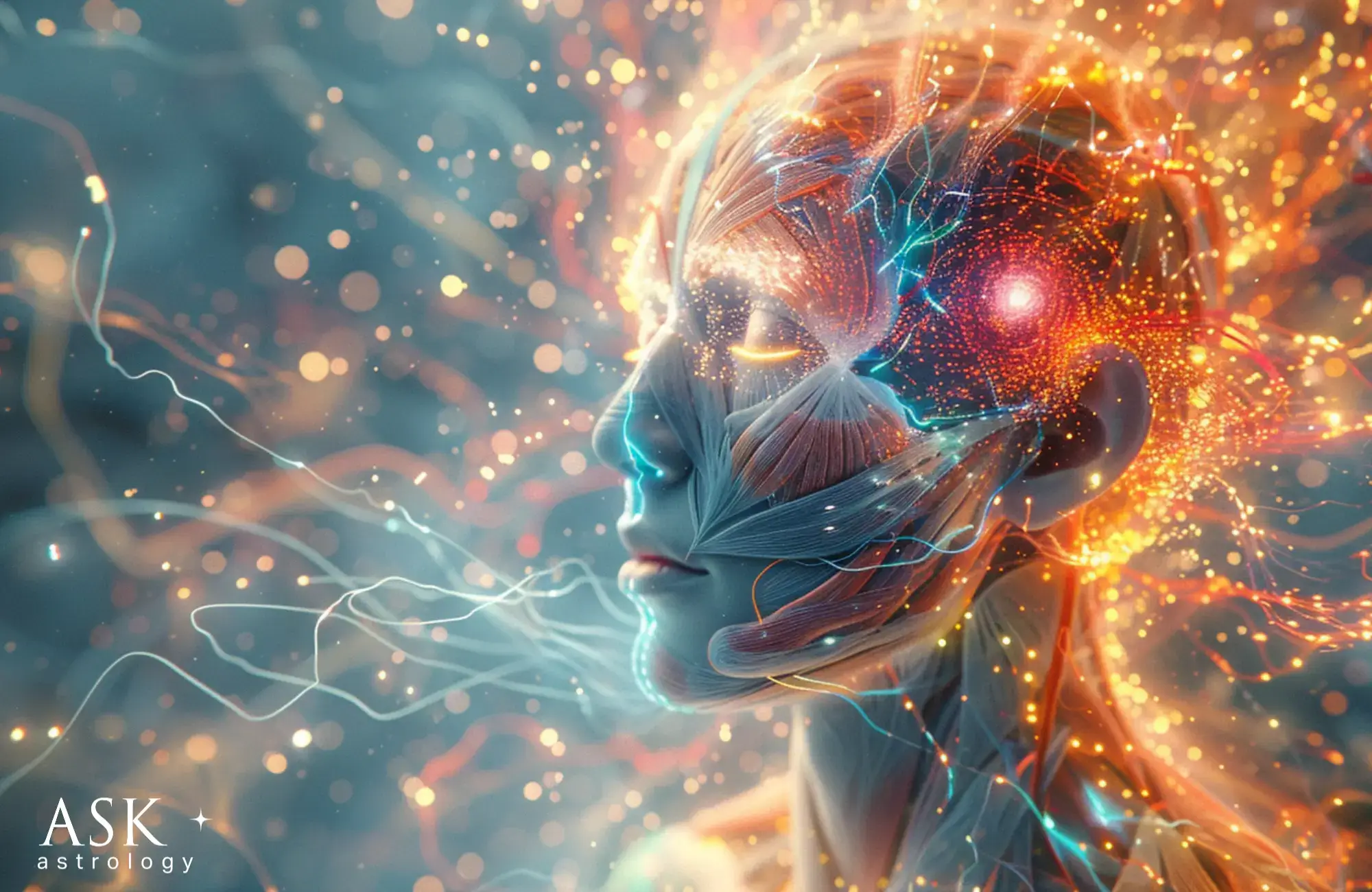There are two aspects to your nervous system: the sympathetic nervous system and the parasympathetic nervous system. The sympathetic nervous system correlates to the active half of the personality. It is responsible for the fight-or-flight response, and is engaged when we are mobilized for action. This is our get-up-and-go faculty— our capacity to actively engage with what we are doing, and to create effects in the world by conscious activity. If this system is healthy, we are vital, energized and motivated. Our reactions are quick, our attention is sharp and we are interacting directly and effectively with our surroundings. If your sympathetic nervous system becomes excessively dominant, you may experience symptoms related to over-activity, such as insomnia, irritability, overstimulation, difficulty sustaining attention, digestive trouble or panic attacks. The parasympathetic nervous system correlates to the receptive half of the personality. It is responsible for the rest-and-digest functions, including the sleep/wake cycle and the passive processing of food. The parasympathetic system is associated with our ability to calm down and rest. If this system is healthy, we are able to “come down” after periods of high activity relatively quickly and we are resilient under stress; after the threat or stimulus is removed, we naturally relax back into an easier, restful mode. We are able to “let go,” and our sleep and digestion are consistent and regular. If you have an overactive parasympathetic nervous system, you may experience lethargy, chronic fatigue, sluggishness, depression or lack of motivation.
Ancient Wisdom
While the scientific understanding of the nervous system is relatively new, the ancients were well aware of two aspects of the energy system as the foundation of balanced health.
Hindu philosophy posits the existence of two polar currents which flow through the body as psychic energies in pathways parallel to the spine on an inner level. These pathways, or nadis, are called the sushumna, which runs along the center of the spine, and Ida and Pingala which spiral around it.
Next after this publicity
Pingala, the solar current, is centrifugal, tending toward conscious awareness and objective knowledge, and the differentiation of intellectual discrimination. Ida, the lunar force, is centripetal, subconscious, undifferentiated, regenerative, tending towards reunification of all that is separated by the intellect.
In this doctrine, Kundalini (the goddess of the serpent fire) is the basic life force which animates an energy system. This force descends into man through the umbilical cord at the navel and then, after the umbilical cord is cut, coils itself in the sacral center, where it rests upon the triangular bone at the end of the sacrum. When aroused, this cosmic power passes up through the three energy channels— the solar channel, the lunar channel, and the middle column between them.
This identical energy map is witnessed in the symbol of the caduceus of Hermes: two serpents coiled around a central staff. To this day, the symbol of the caduceus can often be seen on ambulances, hospitals and other medical infrastructure, as it is the foundation of the human energy system.
In this way, we find confluence of thought among modern exoteric scientists and ancient esoteric philosophers. Spiritual philosophies about metaphysical anatomy predate modern science by thousands of years, yet they nevertheless correspond to what we understand about the autonomic nervous system. The solar principle corresponds to the sympathetic nervous system, and the lunar principle corresponds to the parasympathetic nervous system.
Regulating the Nervous System is Balancing the Aura
This similarity is especially evidenced in Polyvagal Theory, the study of vagal nerve tone. The vagus is a cranial nerve, originating in the brain stem and traveling through the face, neck, lungs, heart, diaphragm and abdomen, including the stomach, spleen, intestines, colon, liver, and kidneys. The vagus nerve is part of the autonomic nervous system, the body’s unconscious control system that helps regulate our internal organs to optimize health, growth, and restoration.
Next after this publicity
The vagus nerve resides in the parasympathetic branch of the nervous system, meaning it has great effect upon our rest, recovery and digestion. When we have a “toned” vagus nerve, our ability to rest, recuperate, recover and restore is strong. We are able to remain calm, or calm down quickly, and our reactions to potential risks or threats are proportionate and short-term.
A dysfunctional vagus nerve can mean the nervous system is overactive and in a permanent “fight-or-flight” mode. This means the mind never completely calms down, recovers or restores, even when stressors or potential threats are eliminated from the environment. This can result in irritability, impulsivity, tremors, insomnia, distorted judgment and all the other symptoms of an agitated nervous system!
Esoterically, this would translate to an imbalance of the feminine or lunar principle of the body. Energy is predominating in the Pingala current and lacking in the Ida current.
Interestingly, both esotericists and scientists come to the same conclusion about how to remedy such an imbalance: meditation. Just as ancient yogis and monks observed the effects of meditation upon the central column, so too have modern scientists observed the effects of meditation upon the vagus nerve which travels from genitals through the heart, throat and into the center of the brain! As the vagus nerve is stimulated, it slows the heart rate down, turning on the “rest and digest” functions of the body and producing a sense of calm.
Meditation stimulates the vagus nerve in several ways. Because the vagus nerve moves through the throat, it can be stimulated through chanting. Scientists have observed that meditation practices which involve intoning sounds like ‘Om’ slow the heart rate, and this is due to the activity of the vocal cords upon the vagus nerve.
The vagus nerve can also be stimulated by deep belly breathing, as it moves through the diaphragm. You may notice that anxious people inhale on virtually every sentence or every word, or unconsciously hold breath in. When you are frightened, similarly, you gasp. Inhaling and withholding breath engage the sympathetic system and trigger a fight-or-flight panic response. Prolonged exhales, on the other hand, engage the parasympathetic system and the vagus nerve which slows the heart rate, and calms the body down. Meditation practices which incorporate breathwork will not only promote a sense of calm in that moment, but actually tone the vagus nerve so that we are more calm more of the time.
Next after this publicity
Every emotional or physical response we have produces a chemical response throughout the body. By modulating your physiology through meditation practices like breathwork or chanting, you can actually gain authority over your own neuro-chemical processes— or, put another way, you can master your own aura.






































